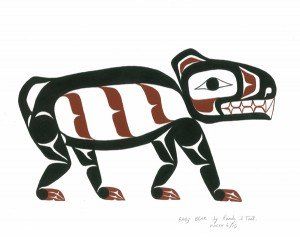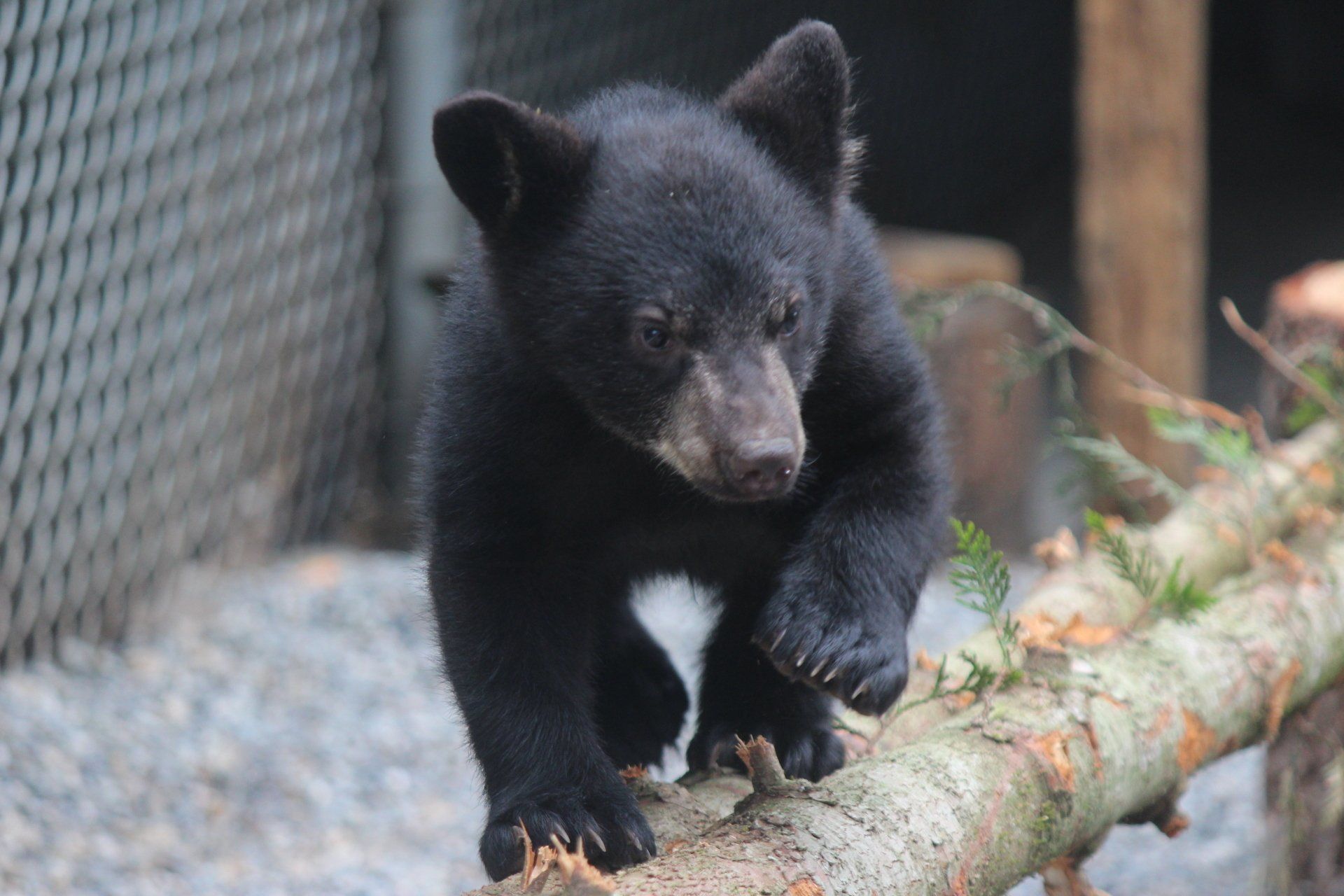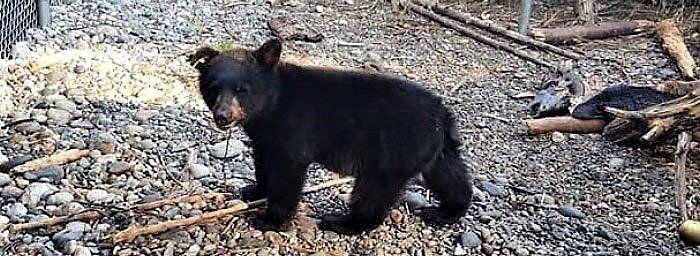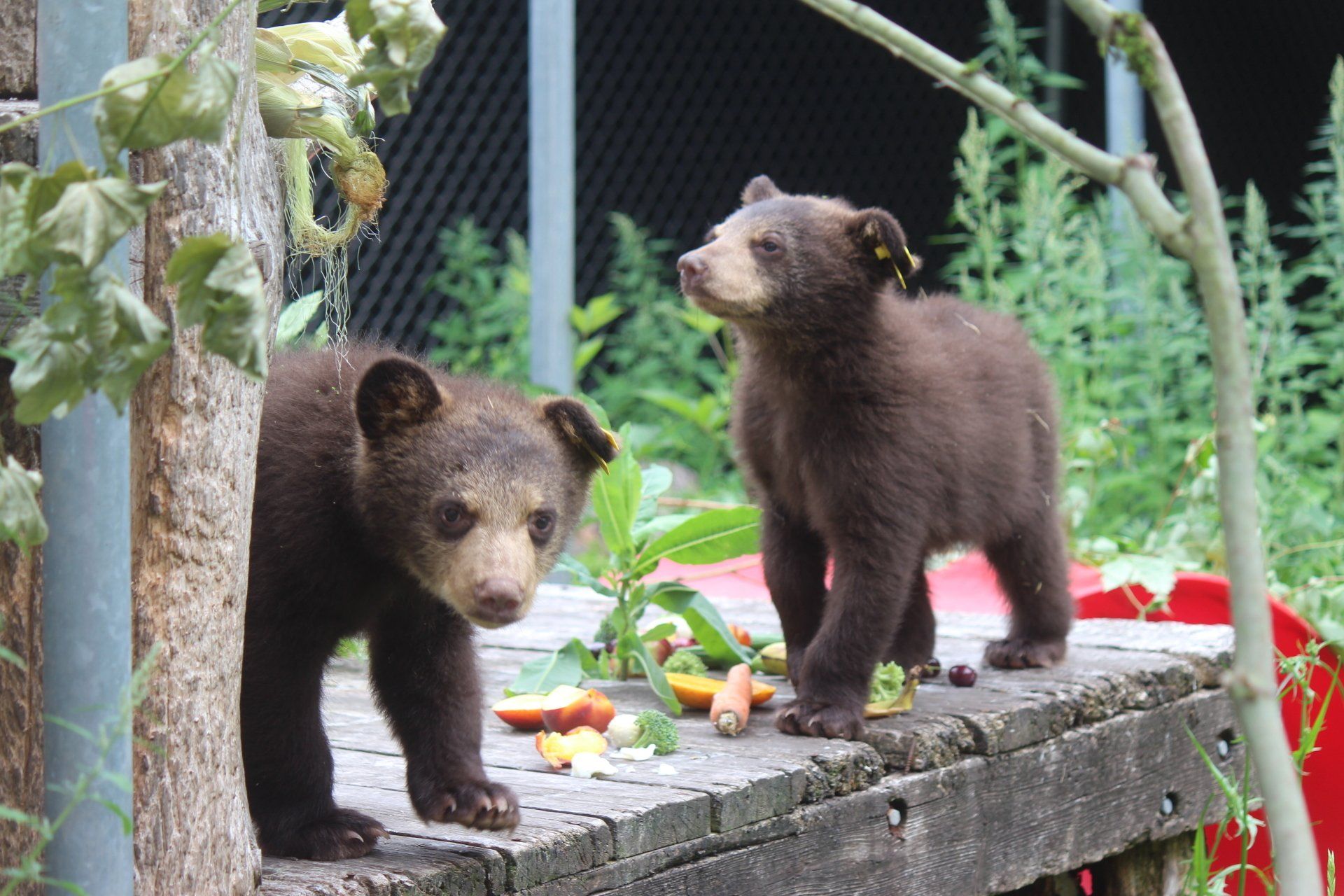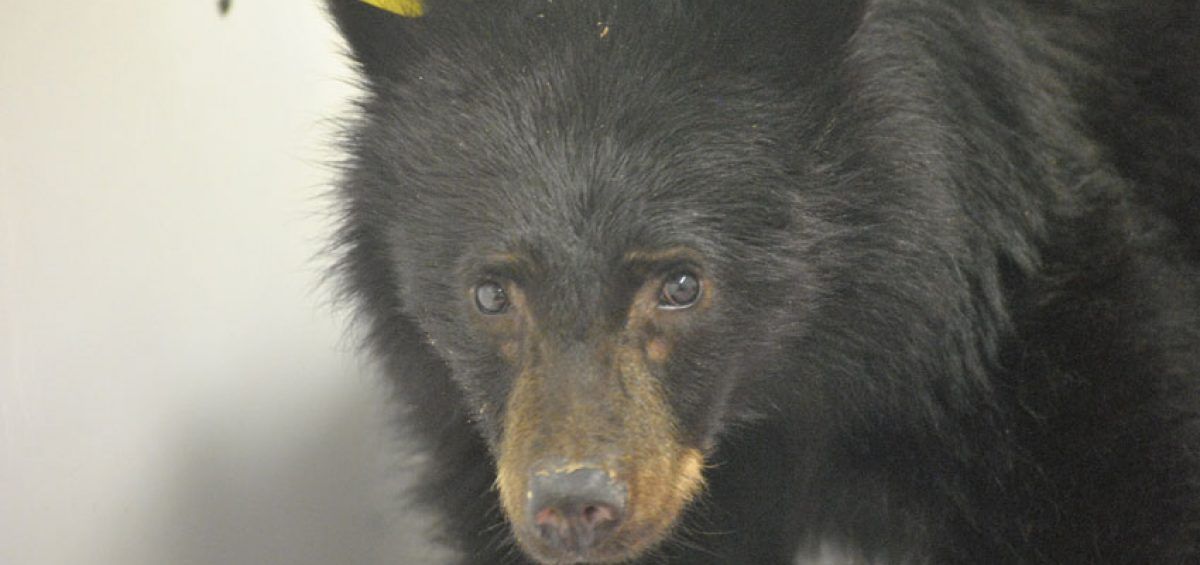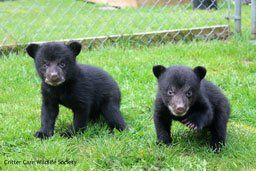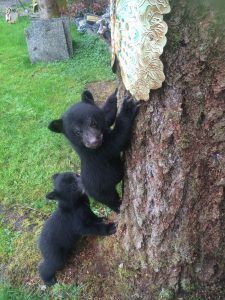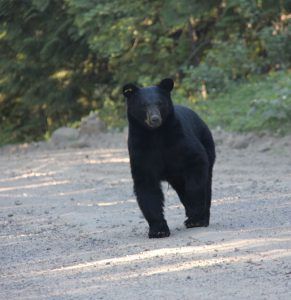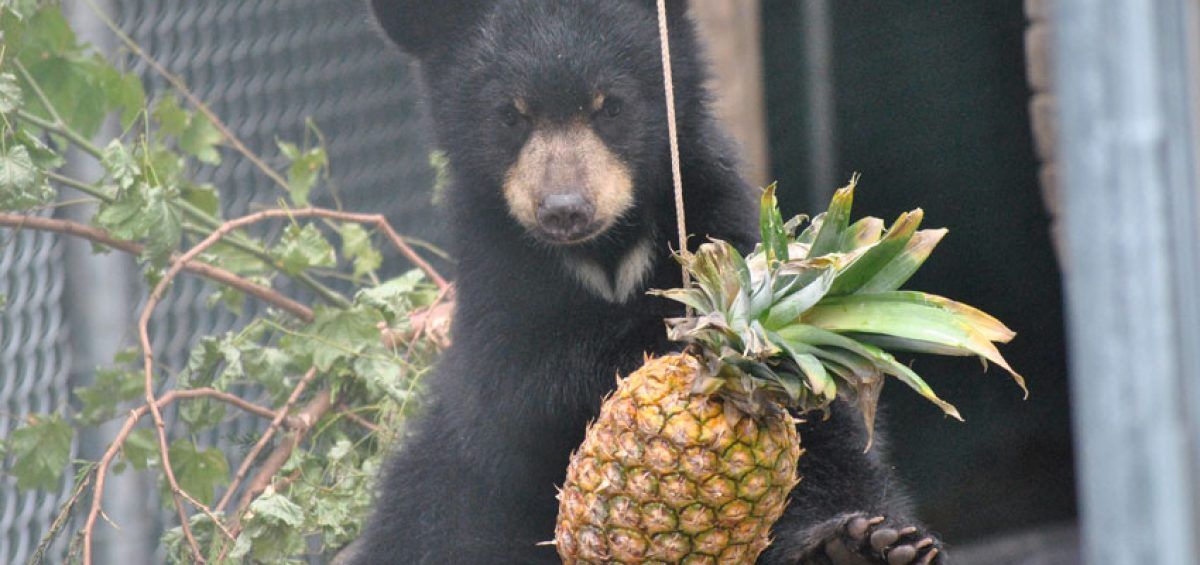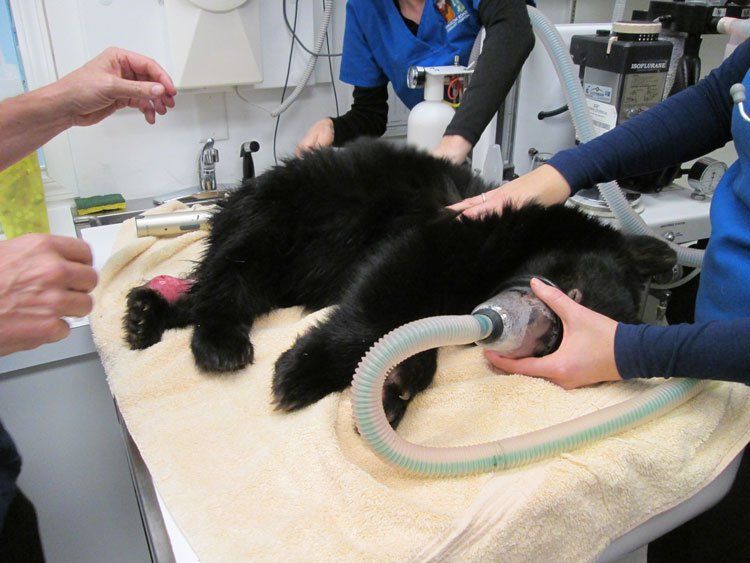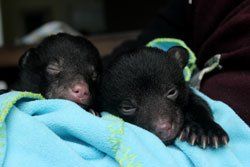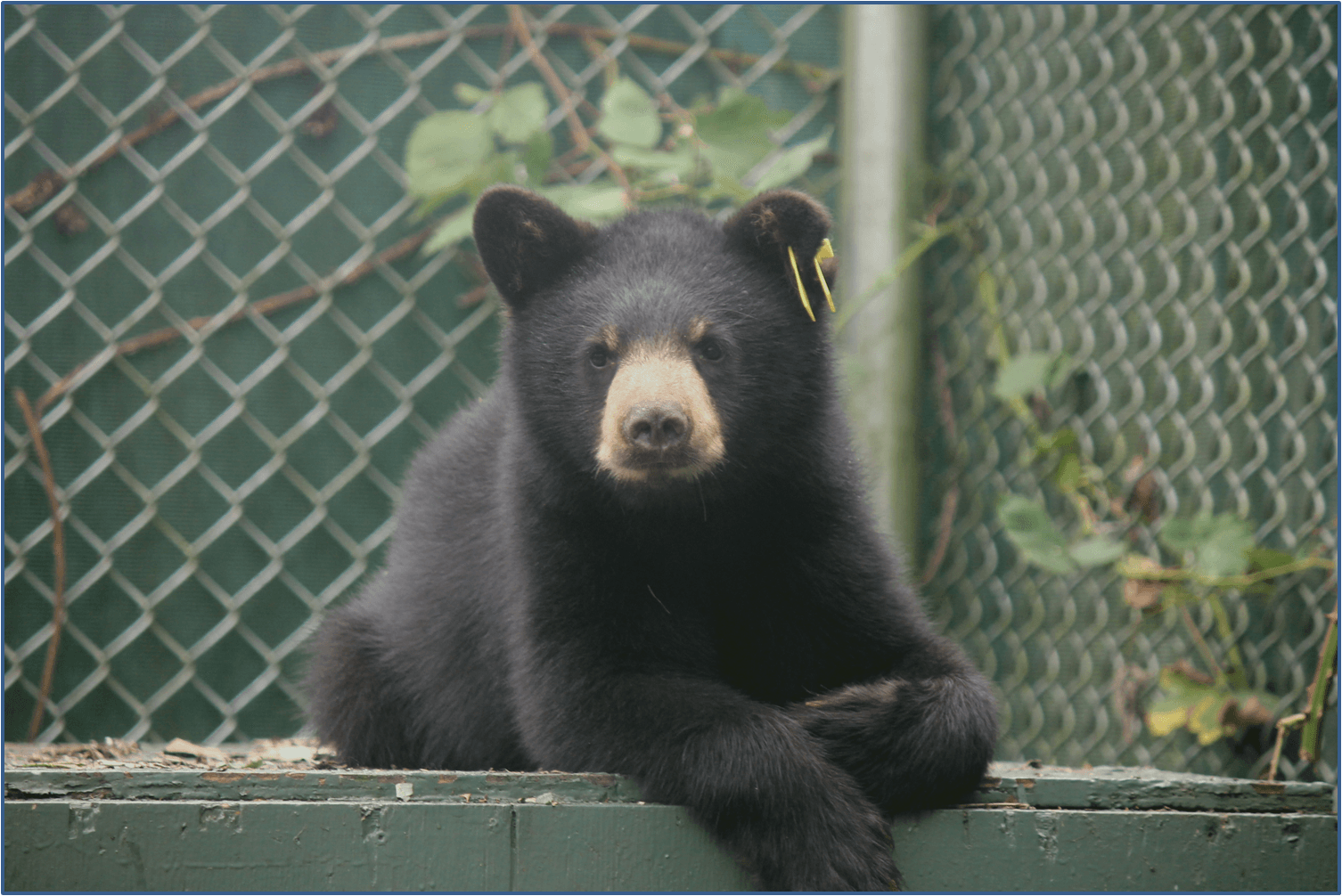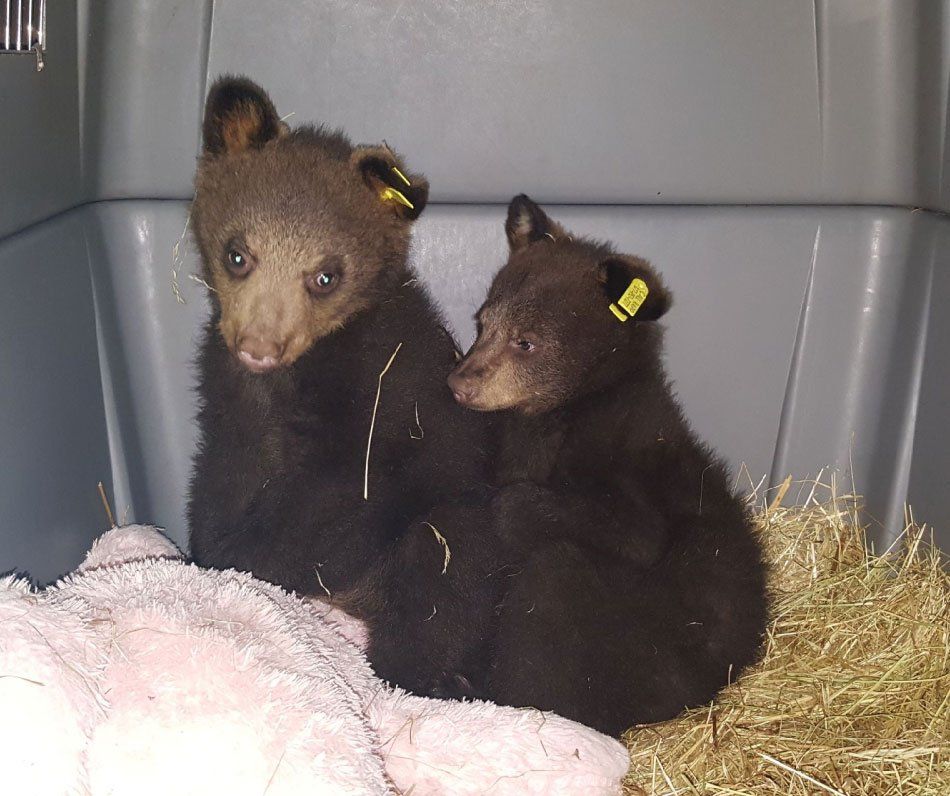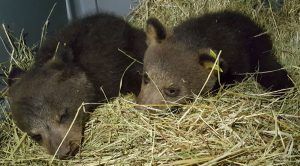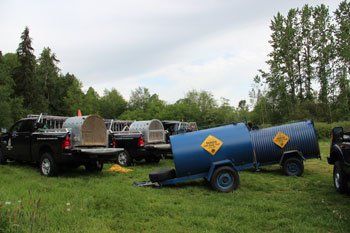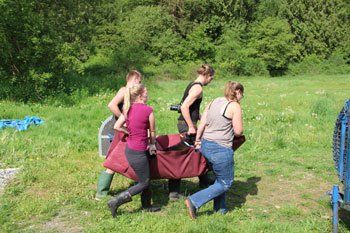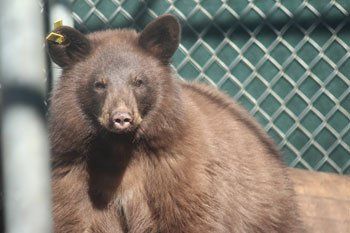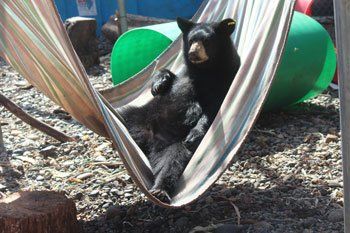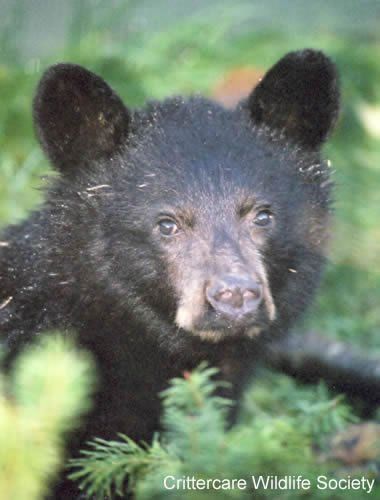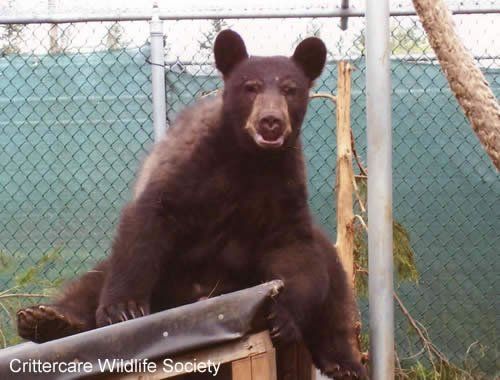What is here today can be gone tomorrow. Every life is a miracle, every life deserves a second chance.
- Gail Martin -
Bears
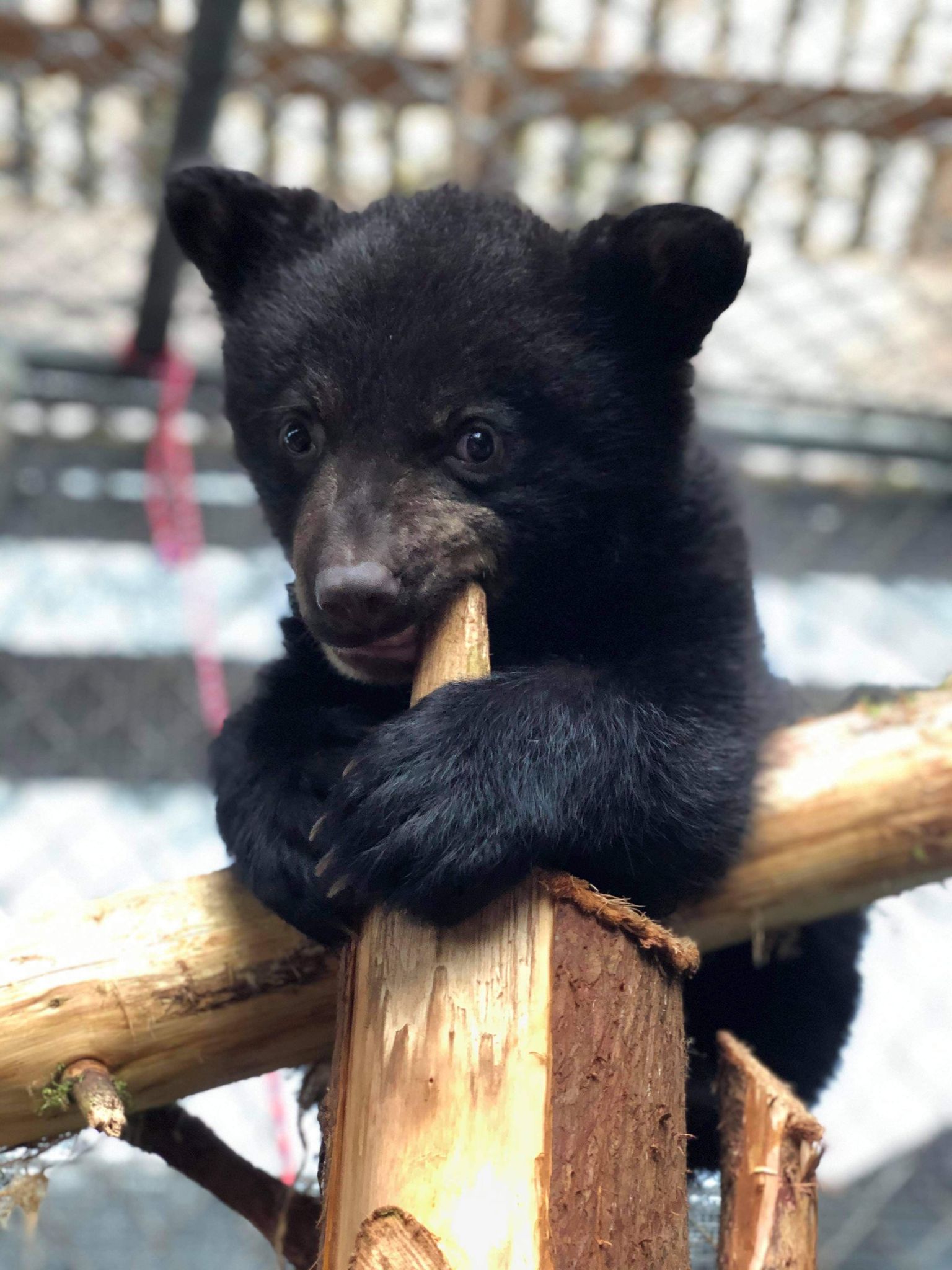
Description
- Color can range from black, cinnamon brown, silver blue and even white.
- White bears are better known as “Spirit” or “Kermode” bears.
- Has color vision and a keen sense of smell.
- Can run up to 35 miles per hour.
- Average weight of 125 to 600 pounds, 4 to 7 feet from nose to tail, and 2 to 3 feet high at the withers.
- Has small eyes, rounded ears, a long snout, a large body, a short tail, and shaggy hair.
Black Bear Sounds
Stereotype Growl – This is not a BEAR! Growls are rare or absent in black bears.
Cub Distress Call – This is a distress sound made by a cub that is separated from its mother.
Nursing Cubs – Black bear cubs make a motor-like pleasure sounds as they nurse. Similar to a cat’s purring.
Moan – When bears are very scared or are being threatened by a dominant bear they will moan.
Cub and Mother – The cub will make a cooing sound and the mom will grunt when they converse.
Blowing and Chomping – Bears blow and clack their teeth when they are afraid or when they are startled by a person, it appears as a defensive threat.
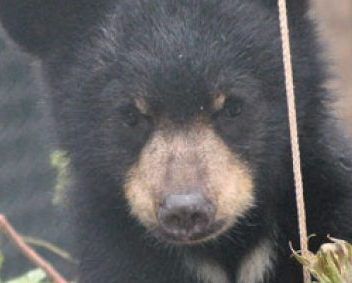
Habitat
Black bears have lost over 60% of their historical range of travel. Denning sites are rock crevices, hollow trees and dense vegetation.
They are found only in North America in large forests with many kinds of fruit and nuts.
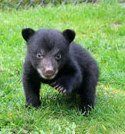
More Facts
Diet
Preferred foods are berries, nuts, acorns succulent greens and insect larvae. Meat and less succulent greens are eaten when preferred foods are scarce.
Typically shy and easily frightened. black bears usually retreat before people are aware of them. They are good tree climbers and swimmers. They are very intelligent and curious and they rarely attack people.
Can live over 25 years in the wild (average is 18 years). Usually has 2 or 3 cubs during the mothers’ sleep every other year.
Mating season runs usually from late May to early July with cubs being born in January or early February.
Cubs usually stay with their mother for 17 months and then one to six days before the mothers are ready to mate they force their yearling to stop traveling with them.
Hearing exceeds human frequency and probably twice the sensitivity. Sounds – they are usually silent. A variety of grunts in amiable situations. Loud blowing noises or clack teeth when frightened.
Most bears become active just before sunrise, take a nap or two during the day and bed down an hour or two after sunset.
Hibernation
Black bears are considered efficient hibernators. They go without food, water or passing waste for up to 7 months when hibernating in the northern regions of North America.
The length and depth of hibernation is genetically programmed to match the regional norms of food availability.
Bears in the Southern region where food is available year round often do not hibernate at all and those that do are roused easily.
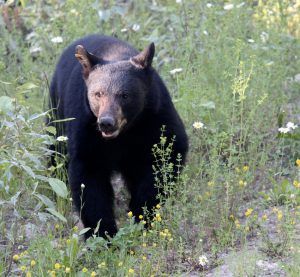
Challenges
Have a great capacity to live in close proximity to people.
Led by a keen sense of smell, they will travel toward food sources in unsecured garbage, bird feeders, farm crops, beehives and outside pet food.
Camping With Bears
Black Bears can swim to island campsites
Keep food in trunk of vehicles or hang from from a cable hanging 5’ down, 10’ from tree trunk & 12’ from ground.
Black bear mothers may bluff-charge, but they rarely attack people
Most bears are timid to be scared away by yelling, waving and banging pans. Spraying with pepper spray works too.
A sign of curiosity, not anger, standing helps bears see and smell.
Each year there are thousands of encounters between black bears and people, often unknown to the people because the bears slip away so quietly.
Keeping a clean camp helps to insulate bears and helps prevent needless bear relocation or killed as nuisances.
Predators
Flooding. Wolves, dogs, active bears and humans. With a lucrative oriental market for bear gall bladders and paws poaching is a major threat.
Conversion of their habitat to human housing.
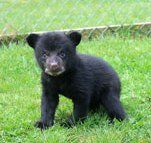
Solutions
Properly store and secure all odorous food/non-food items.
Use electrical fencing around hives and orchards and attach spill pans to bird feeders and hang out of reach (10 feet up).
Don’t surprise a bear – if walking in the woods, warn a bear you are coming by periodically clapping your hands or use bells.

